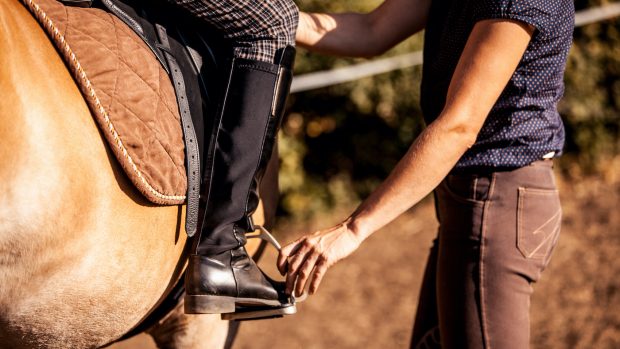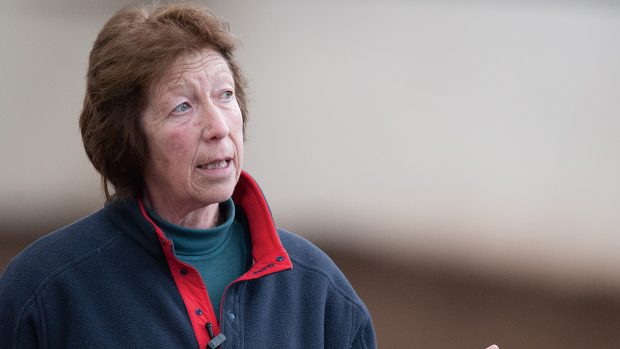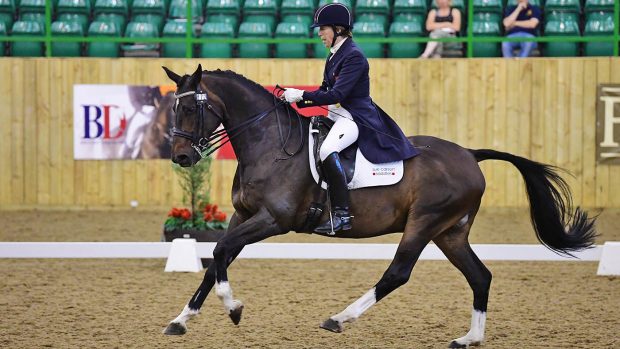Pammy Hutton on how dressage judging must change and building Olympic legacies
WHEN I can’t sleep, I fret about who wins and who doesn’t.
The world is “happy” with multi-gold medallists Jessica von Bredow-Werndl and TSF Dalera BB. But I preferred Charlotte Dujardin’s test to the second-placed combination (Cathrine Dufour on Bohemian) in the freestyle at the dressage Europeans, who, to my mind, did not show quite the harmony the gold medal-winner gave us – the same harmony that Carl Hester has brought to today’s dressage scene. Carl was wickedly undermarked in the special, yet softness and ease prevailed in his test.
Across the competitive sphere, violent rider movements and obvious spurs have no place in the upper echelons. And how long before “behind the vertical” is routinely marked down? Force and “holding” hands that pull backwards won’t keep dressage on the world stage.
Then there’s the “who”. As a trainer who’d been arena-side at the Europeans confided: “You have to compete in front of these top judges at least half a dozen times, if not more, even to begin to get noticed and get the marks deserved.”
Indeed, some newbies’ mistakes were marked more harshly than the names’.
And what mark does one give a horse that double-beats a bit in piaffe? Six at most, as suggested by the judges’ exam? Or maybe a four as referenced in the FEI judges’ guidelines? But remember to give eights and nines to a top international combination or you’ll get no dinner! While that’s not advice I’d like to give, it’s not entirely tongue-in-cheek.
Dressage judging really should become more honest, even if it does mean dramatically altered results.
A real legacy
WE were promised a London 2012 “legacy”. Then on 26 August 2021, an H&H headline screamed “Tokyo success is a gift to ‘grab with both hands’”.
So, let’s think about that.
“Harnessing the positivity around these medals will be crucial,” according to British Eventing’s Helen West, who also mentioned championing the “network of fantastic riding establishments across the UK that are there, ready to offer opportunities”.
What happened to that post-London Hoof campaign – incorporating “Take Up the Reins” and “Trot to be Trim” – that extolled the benefits of riding? Where is “the buzz” so enthusiastically talked about? Which yards and riding schools benefited and which riders, apart from those on the World Class programme?
Thus far, diddly dink…
Let’s hope Tokyo’s aftermath bears more fruit than London’s nine-year legacy.
Participants in horse sports are overwhelmingly the second or third generation of horsey families who can offer ready-made opportunities. First-generation riders generally rely on riding schools for early equestrian experiences.
Many local riding establishments facilitate this admirably. But there is a shortage of schools that can bridge the gap from early learning to professional horseman or successful performance rider, with the advent of more academically orientated colleges contributing to the demise of such centres.
Not wishing to fall into the “all talk and no action” camp, here’s my idea…
An X-Factor series to find potential top riders in all disciplines, including para riders. If it featured the rich, the poor and the talented, the media would love it. Chosen candidates would go into 10 top yards, funded for two years, not as dogsbodies but to underride for elite riders. At an annual championship, any prize money would be spent on training.
Any sponsors out there? Talland will host selection days for free.
There were equestrian medallists at both Tokyo Games who learnt at riding schools. Giving others that opportunity would be the best Olympic legacy.
Good from ghastly
IT’S impossible to mend the heartache for Nick Gauntlett and Sophie Hulme who lost four horses when an HGV ploughed into their stationary lorry.
One of them, Party Trick, was Nick’s comeback horse with genuine international potential. Inspired by Tamarillo’s clone, Islay Auty and I – supported by Carl Hester and many others – want to give Nick the means to breed a Party Trick clone, or the next closest possible horse.
Our aim is to give the Gauntlett family, especially the children, something to smile about again. A JustGiving page is being created. Let’s do this and bring about some good from the ghastly.
- What legacy would you like to see come out of Britain’s Tokyo success? Write to hhletters@futurenet.com
- This exclusive column will also be available to read in H&H magazine, on sale Thursday 14 October
You might also be interested in:

The Archie Legacy: lasting memorial for four event horses killed in road collision

‘He’s for the Paris Olympics’: owner Carl Hester on Imhotep as he scores a nationals hat-trick with Charlotte Dujardin

Laura Tomlinson: ‘This is what dressage should be’

Subscribe to Horse & Hound this spring for great savings
Horse & Hound magazine, out every Thursday, is packed with all the latest news and reports, as well as interviews, specials, nostalgia, vet and training advice. Find how you can enjoy the magazine delivered to your door every week, plus options to upgrade your subscription to access our online service that brings you breaking news and reports as well as other benefits.




